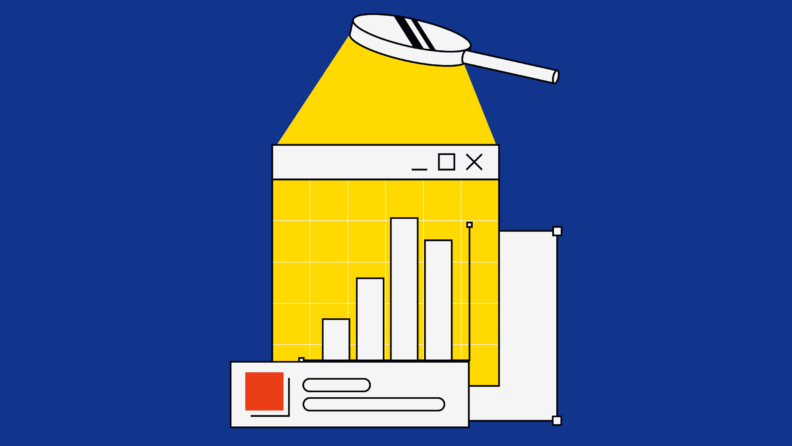Want to boost your lead-to-opportunity conversion rates this year? You need a better lead scoring model.
From predictive to implicit models, the right lead-scoring process drives efficiency across your sales and marketing teams and spends your resources wisely.
What is a Lead Scoring model?
A lead scoring model is a process for grading inbound leads by their intent to purchase, assigning numerical values to activities or characteristics of your ideal customer profile.
In a resource-strapped startup, lead scoring plays a crucial role in focusing your team's time and budget on the leads most likely to purchase your product.

Types of Lead Scoring Models
Lead scoring models are not one-size-fits-all. Let's break down three of the most popular models to find the one that's right for you:
- Predictive lead scoring model
- Implicit lead scoring model
- Explicit lead scoring model
Predictive Lead Scoring
Leveraging machine learning and algorithms, a predictive lead scoring model uses historical data and patterns to forecast the probability of leads converting.
With the help of AI or lead scoring software, you are now able to analyze a large amount of data points to identify your best leads.
This model is best used when your organization has a large and diverse data set. If you have a significant amount of historical customer engagement and interaction data this model might be best for you.
| Pros | Data-driven: Instead of relying on compiling a bunch of reports or getting anecdotal information from your sales team, an AI algorithm does all the heavy lifting for you. The core benefit of this model is that it is a data-driven model that doesn't rely on human judgment. |
| Cons | Complex setup: This model can be harder to implement, but it can offer better accuracy and predictive power. |

Implicit Lead Scoring
This model focuses on actions and engagement that leads make with your brand. For example, attributing different values to the web pages your leads will visit and accumulating that score over time.
A great example of this is applying a higher value for someone who visits your pricing page versus a score you would apply if they only visited your product page. Pricing page visits could be a sign of high intent and may indicate a lead is further along in the buying journey. Other data points can include:
- Email opens and clicks
- Social media engagement
- Content download
| Pros | Real-time data: This model doesn’t rely on leads to self-report information, instead using engagement metrics to indicate interest in your product. |
| Cons | Requires well-defined customer journey: To operationalize this model, you’ll need to have a good understanding of your buyer’s journey and the behavioral characteristics they exhibit at each stage of the funnel. |
Explicit Lead Scoring
In an explicit lead scoring model, you can incorporate a mix of demographic and firmographic data provided by a lead via a marketing form on a landing page or lead enrichment tools. Scores are assigned based on:
- Job title
- Industry
- Geographic location
- Company size
For example, if your ideal customer is a Director of Marketing from a medium-sized tech company, you can make sure to analyze the demographics like industry, company size, and title to see which leads are a good fit.
| Pros | Simple setup: This lead scoring model is one of the simplest to implement. Depending on where your organization is today with understanding your ideal customer profile, this fit component can be an important part of your scoring. |
| Cons | No behavioral indicators: This model does not factor in engagement or behavioral data to indicate interest in your product or the characteristics of a long-term customer. A high-scoring lead in this model may meet size and industry requirements, but they might not be in the market for a new solution. |
Characteristics of a Good Lead Scoring Model
A good lead scoring model is tied to business outcomes, allows for iteration, and delivers cross-functional impact. Four metrics to measure your model against include:
- Aligned to business objectives: This is the place to start. A good lead scoring process aligns closely with your organization’s revenue goals. The model should be a reflection of the unique requirements needed to execute your business goals.
- Tried and tested: Your model should yield an improvement in your conversion rates. A good scoring model needs to be based on reliable data and provide consistent trends and actionable insights.
- Constant iteration: A good lead scoring model evolves and is subject to continuous refinement. These models should be reviewed regularly to adjust to changing customer behavior and market conditions.
- Cross-functional collaboration: An effective lead scoring model requires cross-functional collaboration across business units. Marketing and sales should both be at the table contributing their expertise, ensuring the scoring criteria accurately reflect the characteristics of your ICP.
Setting Up Your Own Lead Scoring Model
I follow this simple three-step process to implement a lead scoring model:
- Analyze Customer Data: Identify common attributes, purchasing behaviors, and get buy-in from stakeholders across your go-to-market teams.
- Analyze Non-Customer Lead Data: Comparing this group with your current customer base will flag attributes of an ill-fitting customer that can be worked into your model.
- Assign Point Values and Scores: Weigh the positive and negative attributes accordingly, and start putting your model into practice. This should be a living process where you constantly incorporate feedback and iterate.
Improve Customer Acquisition with Lead Scoring
Lead scoring is an important mechanism in driving marketing and sales alignment, prioritizing resources, and significantly improving strategies for customer acquisition and retention.
The best lead scoring model for your company depends on your specific needs, target audience, and industry dynamics. Make sure to evaluate the different models and experiment to find the one that works best. Use data to optimize and make sure to routinely revisit your model as your business evolves and changes.
Want to take your RevOps to the next level? Get expert tips & software reviews in your inbox. Sign up to be notified when The RevOps Team newsletter goes live.


